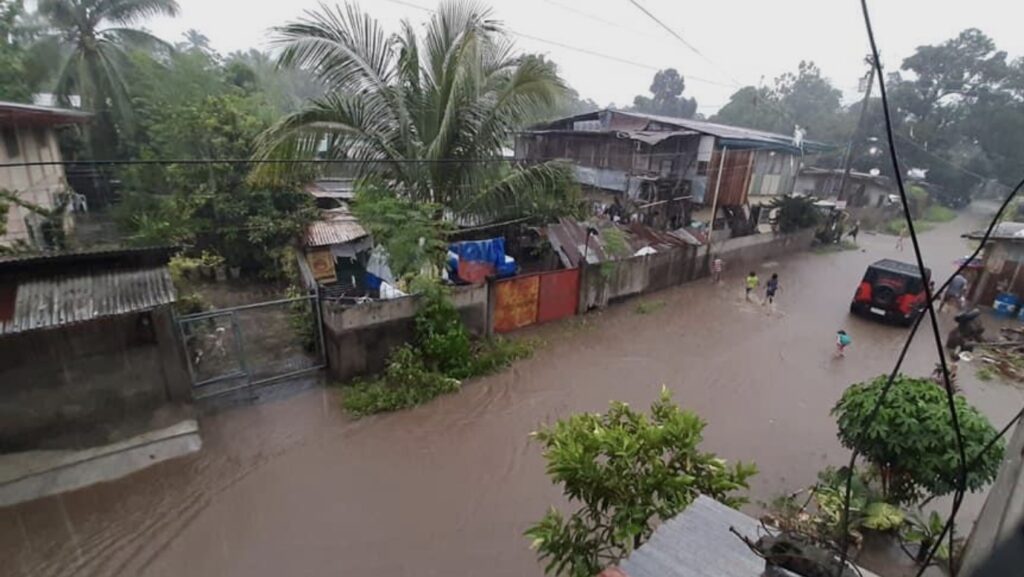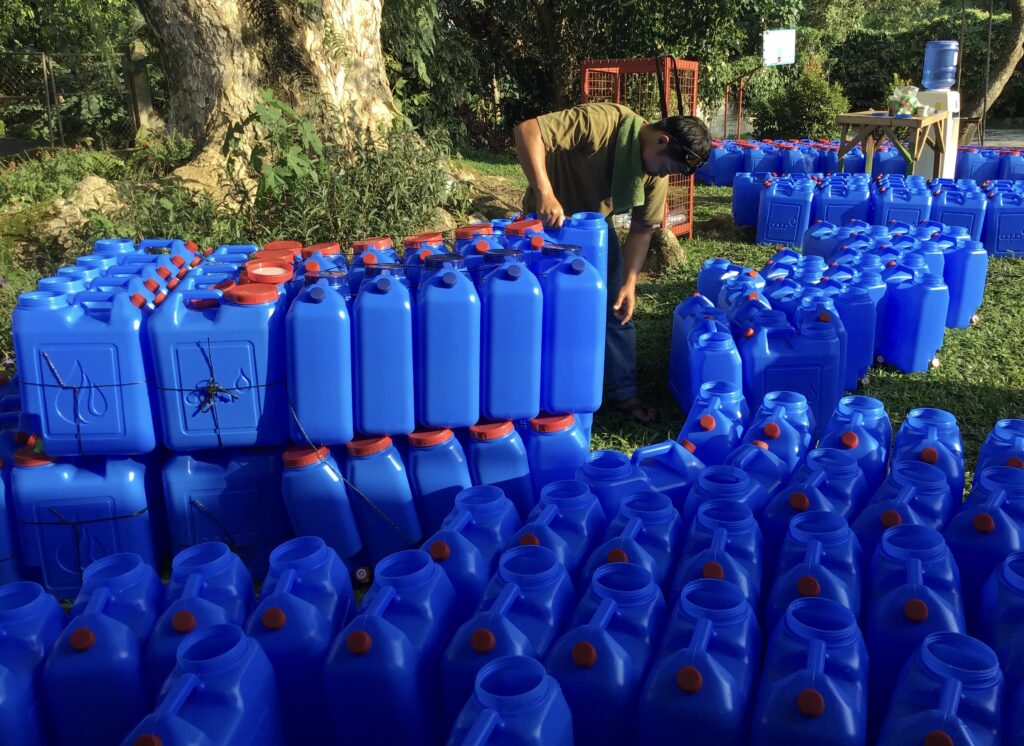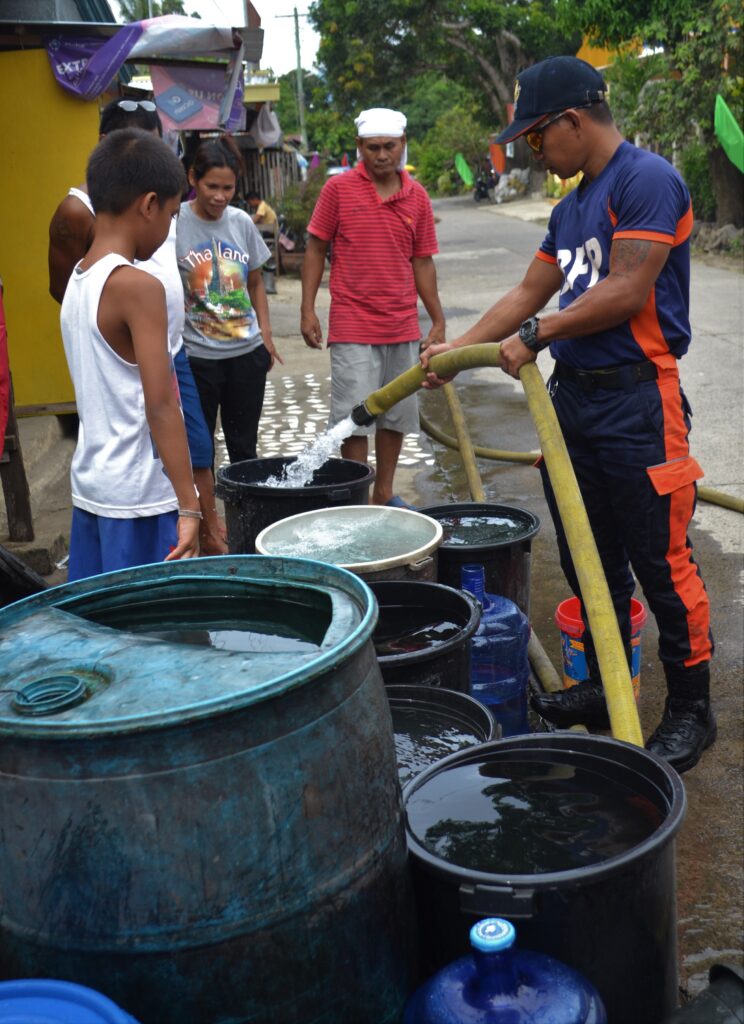Text and Photos by Henrylito D. Tacio
The Department of Science and Technology (DOST) is putting water resource management as one of the major priorities in their research and development (R&D) programs through a partnership with both public and private sectors, said Science Secretary Fortunato T. de la Peña during a virtual forum on ensuring water sustainability.
“We (DOST) have been able to contribute to the development and application of technology and systems that could help to improve our water resources management in the country,” said Sec. de la Peña in a forum that was held via DOST-Science for Change Program Facebook Page.
For one, the DOST’s Philippine Council for Industry, Energy and Emerging Technology Research and Development (PCIEERD) is collaborating with the National Water Resources Board (NWRB) in monitoring the conditions of the country’s water resources.
The NWRB is an attached agency of the Department of Environment and Natural Resources responsible for ensuring the exploitation, utilization, development, conservation, and protection of the country’s water resources.
Through the Climate Resilient Initiative, both agencies provide scientific information on planning, critical infrastructure, particularly concerning climate change adaptation and disaster risk reduction programs.
The automated real-time monitoring system (ARMS), which Mapua University developed, provides sensors to the NWRB for all its water resources development and management activities, access to real-time data on water levels, and as a decision support tool for the daily management of the reservoirs.
Installed sensor loads are now helping transmit real-time data in weather stations in Ambuklao Dam, Apuna Dam, Pitikan Dam, Bobok Dam, Toyongan Dam, Badayan Dam, San Roque Dam, and Filex Dam.
For another, DOST regional offices with local agencies and local government units are likewise addressing this concern, according to Sec. de la Peña.
In the Cordillera Administrative Region and MIMAROPA (composed of Occidental Mindoro and Oriental Mindoro, Marinduque, Romblon, and Palawan), for instance, solar-powered pumps were installed in areas that are beyond the reach of power lines. Such an initiative aims to supply the domestic needs for livestock production and irrigation.
In Region X, DOST is piloting a vertical helophyte filter system that filters pollutants in wastewater so that they can be recycled.
East Manila is chosen as a pilot area for a forecasting model for complex water supply systems, which was developed through the DOST’s program called Collaborative Research and Development to Leverage Philippine Economy (CRADLE). The Ramon Magsaysay recipient Asian Institute of Management (AIM), serves as its collaborator.
“We hope and foresee that shortly with the appropriate policies and management systems and technologies, we will be able to secure sustainable water management and sanitation for the benefit of all Filipinos,” Sec. de la Peña stressed.
In the same forum, Dr. Rowena Cristina L. Guevara also shared the water sustainability landscape in the country.
“Water can be easily thought of as an abundant resource, however, according to the World Wildlife Organization, only 3% of countries’ water is freshwater that is suited for human use and consumption,” said Dr. Guevara, who is the undersecretary for research and development.

Flooding houses 
Water supplies 
Water crisis
According to the DOST undersecretary, it is imperative to maximize the use of water and consider its accessibility for everyone. In the Philippines, Filipinos used only 6% of the available water, almost 4.5 times lower in terms of utilization compared to other countries like Chinese-Taipei and Japan.
Recognizing this urgent need, the science department initiated some programs and projects related to water resources management.
In her presentation, Dr. Guevara also shared some of the department’s supported projects, which have contributed significantly to ensuring water sustainability through science, technology, and innovation.
The DOST has deployed technologies that address water concerns in areas with high socio-economic importance. She cited the integrated system for monitoring the water quality of Manila Bay as an example.
In Laguna Lake, the researchers are optimizing methodologies to determine organic compounds and heavy metals for better water quality management, particularly in the aquaculture sector. In Boracay, a science-based guideline for water resource assessment in a tourist island was also developed.
There are also DOST-supported R&D projects that focus on the development of water technologies to improve crop, animal, and fisheries production, according to Dr. Guevara. Among the initiatives is the drift irrigation technology for onion, peanut, garlic, and sugarcane.
“Water is a very valuable resource that greatly affects the quality of life of all and its use should be managed well for sustainability,” wrote Allan Mauro V. Marfal in a press statement.
Marfal cited a 2018 report of the National Economic Development Authority (NEDA) which said that 12.32% out of 22.7 million households have no access to safe water supply, mostly from the indigenous and remote communities. There is also that concern on water sanitation, which rises every rainy and typhoon season.
Currently, the water demands – and shortages – of many cities throughout the country are expanding. In a study done by the Japan International Cooperation Agency, nine major cities were listed as “water-critical areas.” These were Metro Manila, Metro Cebu, Davao, Baguio, Angeles, Bacolod, Iloilo, Cagayan de Oro, and Zamboanga.
“The rapid urbanization of the Philippines, with more than 2 million being added to the urban population annually, is having a major impact on water resources,” notes the Asian Development Bank (ADB) in its Asian Water Development Outlook some years back.
In Metro Manila, for instance, residents often complain of a lack of water during the summer months. In some parts of the metropolis, the water supply situation reaches a vulnerable state that the little amount of water some residents get is not enough even for emergency purposes like cooking and drinking.
Aside from rapid population growth, the water crisis in the Philippines can also be traced to the degradation of the environment and pollution. According to an ADB study, only about 33 percent of river systems are classified as suitable public water supply sources, and up to 58 percent of groundwater is contaminated.
Of the 457 water bodies classified by the Department of Environment and Natural Resources (DENR), only 51 percent meet the 1996 water quality standards. Sixteen rivers are considered biologically dead during dry months.
In addition, wasteful and inefficient use of water, saltwater intrusion, high non-revenue water levels due to leaks and illegal connections, and denudation of forest cover are placing major strains on water resources. “Combined with growing population pressures, it is becoming more difficult to provide basic water services,” the ADB study surmised.
Dr. Sandra Postel, director of the Massachusetts-based Global Water Policy Project, believes water problems will be right there with climate change as a threat to the human future. More importantly, higher global temperatures will worsen the current water problems.
“Although the two are related, water has no substitutes. We can transition away from coal and oil to solar, wind and other renewable energy sources. But there is no transitioning away from water to something else,” said the head of the group that seeks to save freshwater.
The majority of the world’s water is used for agriculture or food production. The Virtual Water App (http://virtualwater.eu/) is a quick way to learn how much water is used in the production of beef (4,650 liters of water for 300 grams of beef steak) and chocolates (2,400 liters per 100 grams of chocolate). It takes 1,000 tons of water to grow one ton of rice grain.
“Water is the most precious asset on Earth,” points out Dr. Sandra Postel, director of the Massachusetts-based Global Water Policy Project. “It is the basis of life.”
“As water is an absolutely vital resource, at the center of life itself, it is a key integrating factor in the environment. Without sustainable water management to ensure that there are sufficient supplies of clean, safe water, the health of ecosystems and those who depend on them, especially people, suffer,” said Dr. Klaus Toepfer during his term as executive director of the Nairobi-based United Nations Environment Program.
Next to air, water is the element most necessary for survival. A household of five needs at least 120 liters per day to meet basic needs – for drinking, food preparation, cooking and cleaning up, washing and personal hygiene, laundry, house cleaning, according to the Washington-based Worldwatch Institute, a global environmental group.
A person needs at least 24 liters of water daily or one liter per hour. Even when he breathes, he still needs water. “Our lungs must be moist to take in oxygen and excrete carbon dioxide,” wrote Leroy Perry in a Reader’s Digest article. “It is possible to lose half a liter of liquid each day just by exhaling.”
Only 2.5 percent of the water that covers over 70 percent of the earth’s surface is considered freshwater. And only 1.3 percent is available for human use since most of the freshwater is trapped in glaciers, ice sheets, and mountainous areas. Freshwater is drawn either from wells (tapping underground sources called aquifers) or from surface flows (like lakes, rivers, and man-made reservoirs).
“There is no more water on earth now than there was 2,000 years ago,” notes the US National Wildlife Federation, which has been working for years to protect water resources not only in the United States but throughout the world as well. “This limited supply of freshwater must meet the needs of a human population that has tripled in the last century and continues to grow at almost 80 million people per year.”
“Whiskey’s for drinkin’,” American author Mark Twain once wrote. “But water is for fightin’ over.” Sir Crispin Tickell, one of the organizers of the 1992 Earth Summit in Rio de Janeiro, agreed: “The world has got a very big water problem. It will be the progenitor of more wars than oil.”

